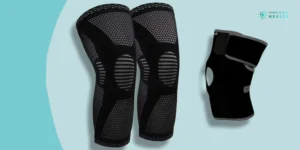Broccoli is packed with essential vitamins, minerals, and antioxidants that provide numerous health benefits. These benefits range from improving digestion to potentially reducing the risk of chronic diseases.
Broccoli Nutrition
Brocoli is a powerhouse of nutrients, offering a substantial amount of vitamins and minerals per serving. Here’s a detailed nutrition breakdown for one cup of raw, chopped Brocoli:
- Calories: 55
- Protein: 3.7 grams
- Carbohydrates: 11.2 grams
- Fiber: 5.1 grams
- Vitamin C: 135% of the Daily Value (DV)
- Vitamin K: 116% of the DV
- Vitamin A: 11% of the DV
- Folate: 14% of the DV
- Potassium: 8% of the DV
- Iron: 6% of the DV
- Calcium: 4% of the DV
- Magnesium: 4% of the DV
- Phosphorus: 6% of the DV
Brocoli Benefits
- High in Antioxidants: Contains compounds like sulforaphane that combat oxidative stress.
- Supports Immune Health: High vitamin C content boosts the immune system.
- Promotes Digestive Health: High in fiber, aiding in digestion and preventing constipation.
- Bone Health: Rich in vitamin K and calcium, essential for bone health.
- Heart Health: Contains folate and potassium, beneficial for heart health.
- Weight Management: Low in calories and high in fiber, aiding in weight management.
Specific Health Benefits
Diabetes
- Blood Sugar Control: Sulforaphane may help regulate blood sugar levels.
- Insulin Sensitivity: Improved insulin sensitivity due to antioxidant properties.
Cancer
- Cancer Prevention: Compounds like sulforaphane and indole-3-carbinol have anti-cancer properties.
- Detoxification: Enhances the body’s detoxifying enzymes, potentially reducing cancer risk.
Osteoarthritis
- Anti-inflammatory Properties: Sulforaphane can reduce inflammation, which is beneficial for osteoarthritis management.
Schizophrenia
- Cognitive Health: Emerging research suggests sulforaphane may have potential benefits in improving cognitive function and reducing symptoms in schizophrenia.
Other Benefits
- Eye Health: High levels of lutein and zeaxanthin support eye health.
- Skin Health: Vitamin C aids in collagen production, promoting healthy skin.
Who Should Avoid Broccoli?
Brocoli and Blood Thinners
- Vitamin K: High levels can interfere with blood-thinning medications like warfarin. Consult your doctor before consuming large amounts.
Brocoli and Irritable Bowel Syndrome (IBS)
- FODMAP Content: Brocoli contains fermentable carbohydrates that can trigger symptoms in people with IBS.
Broccoli and Kidney Problems
- Oxalates: Can contribute to kidney stone formation in susceptible individuals.
Buying Broccoli
When buying Brocoli , choose heads that are firm with tightly packed florets. The color should be a vibrant green, without any yellowing or browning.
How to Tell if Brocoli is Bad
Avoid Brocoli with:
- Yellowing Florets: Indicates aging.
- Slimy Texture: A sign of spoilage.
- Off Smell: Fresh broccoli has a mild, cabbage-like smell.
- Soft Spots or Mold: Any mushy areas or visible mold indicate spoilage.
Broccoli Price
The price of broccoli can vary depending on the season, location, and whether it’s organic or conventional. Generally, fresh broccoli costs around $1.50 to $3.00 per pound. Frozen broccoli is typically cheaper, ranging from $1.00 to $2.50 per pound.
Ways to Prepare Broccoli
How to Clean Broccoli
- Rinse Under Cold Water: Thoroughly rinse Brocoli under cold water to remove dirt and pesticides.
- Soak in Saltwater: Optional, but soaking in saltwater can help remove insects.
How to Cut Brocoli
- Remove the Florets: Cut the florets from the main stem.
- Trim the Stems: Peel and slice the stems, which are also edible and nutritious.
Recipe for Cooking Broccoli
How to Boil Broccoli
- Boil Water: Bring a pot of salted water to a boil.
- Cook Broccoli: Add Brocoli and cook for 2-3 minutes until tender but still crisp.
- Drain and Serve: Drain the broccoli and serve immediately.
How to Cook Broccoli in the Microwave
- Prepare Brocoli : Place broccoli florets in a microwave-safe dish.
- Add Water: Add a few tablespoons of water.
- Cover and Cook: Cover and microwave on high for 3-4 minutes until tender.
Roasted Broccoli
- Preheat Oven: Preheat oven to 400°F (200°C).
- Toss with Oil and Seasoning: Toss Brocoli florets with olive oil, salt, and pepper.
- Roast: Spread on a baking sheet and roast for 20-25 minutes until crispy and golden.
Raw Brocoli
- Eat Fresh: Can be eaten raw, often paired with dips or added to salads for a crunchy texture.
Storing Broccoli
- Refrigerate: Store in the refrigerator in a perforated plastic bag.
- Keep Dry: Moisture can cause spoilage; keep Brocoli dry.
- Use Quickly: Best used within a week of purchase.
- Freeze: Blanch and freeze for longer storage.
Dishes Made With Broccoli
- Broccoli Salad: Mixed with nuts, dried fruits, and a tangy dressing.
- Broccoli Soup: Creamy or clear soup with added herbs and spices.
- Stir-Fry: Combined with other vegetables, meats, or tofu.
- Brocoli Casserole: Baked with cheese and breadcrumbs.
- Pasta and Broccoli: Tossed with pasta and a light garlic sauce.
Takeaways
Brocoli is a versatile and nutritious vegetable with numerous health benefits. It’s rich in essential vitamins and minerals, supports various aspects of health, and can be easily incorporated into a wide range of dishes. While generally safe for most people, those on specific medications or with certain health conditions should consult their healthcare provider before increasing their Brocoli intake. Proper storage and preparation can help maximize its nutritional value and ensure a delicious addition to your meals.





